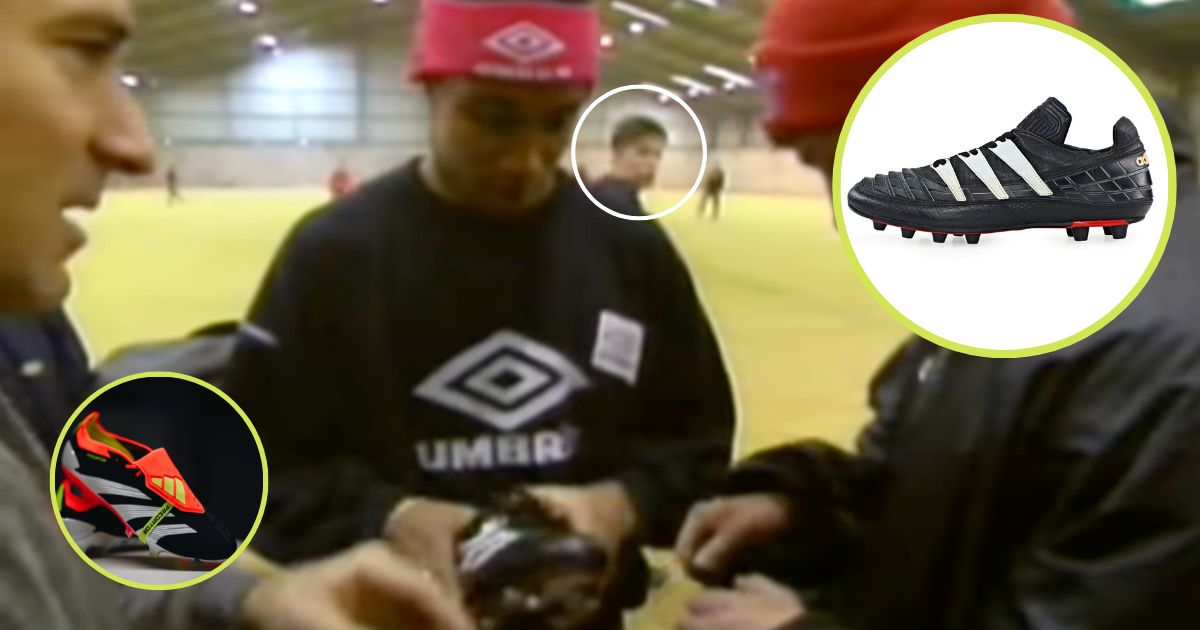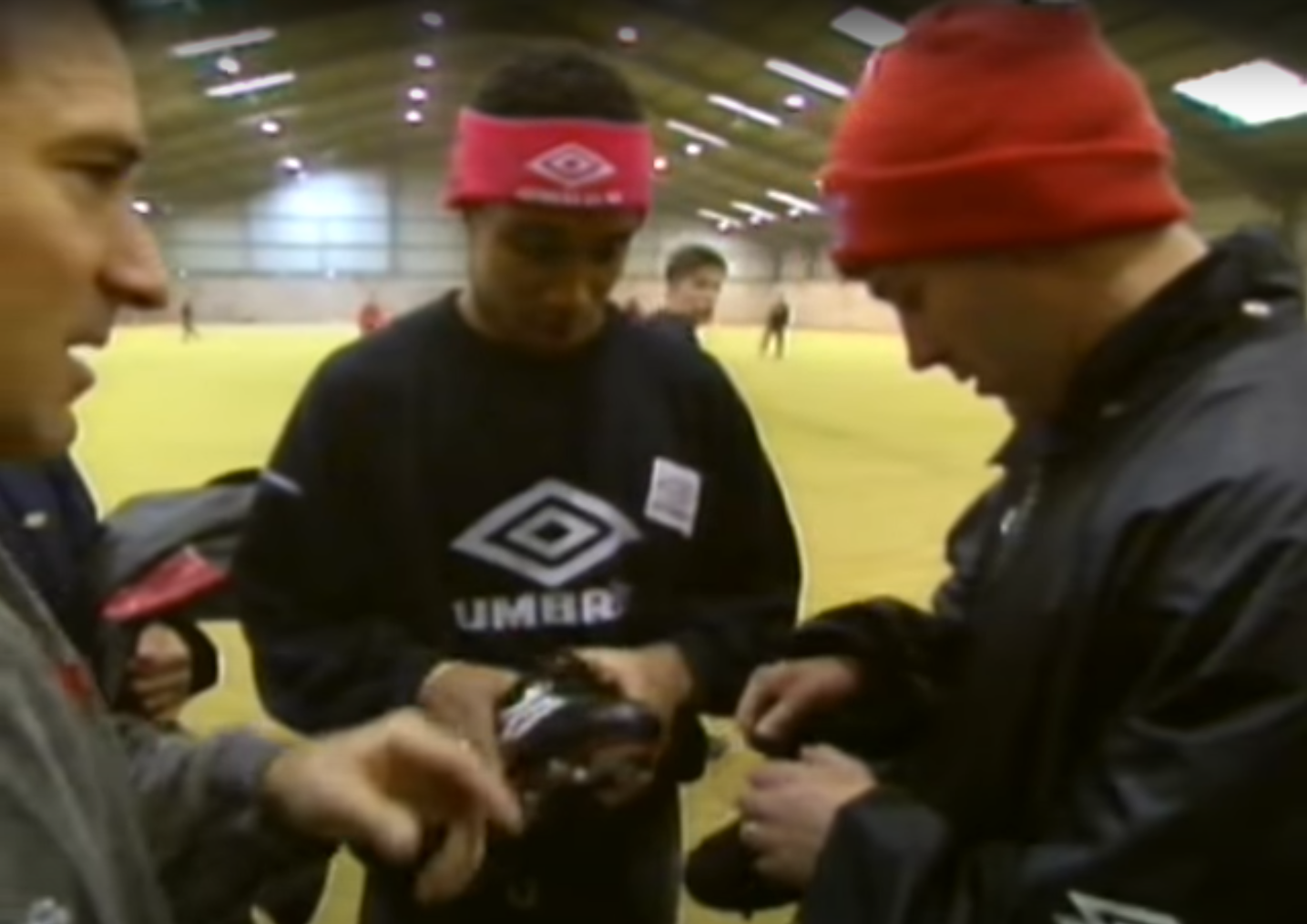
Australian Craig Johnson scored one of the winning goals for Liverpool in the 1986 FA Cup Final against Merseyside rivals Everton. It doesn’t get bigger than that. Or so you’d think.
Incredibly, Johnson’s true impact on the beautiful game probably wasn’t etched in front of 98,000 people at the old Wembley, plus however many millions tuned into the season showpiece on TV when the world really did stop to watch it.
No, Johnson’s mark on football was made inside a nondescript, three-star hotel room somewhere in France as he glued bouncy balls to a pair of football boots in pursuit of swerve, power and accuracy in the early 90s.
The former Liverpool player had quit football prematurely in 1988 to care for his sister who was seriously ill. By the 90s, he was pursuing a career as a businessman and innovator.
He sunk £250k into a boot project designed to help young players improve their shooting accuracy. His bouncy balls on boots prototype evolved into more robust rubber fins and caught the attention of Adidas who picked up the patent and put it into production.
VIDEO: Was David Beckham EVER Actually A Great Footballer?
By February 1994 Johnson was watching Manchester United’s star midfielder, Paul Ince, ping shots in training while wearing one of the first pairs of Predators to ever emerge off a production line. The moment can be watched on YouTube where someone has uploaded an episode of BBC series Q.E.D, a half-hour science documentary series that ran from 1982 to 1999.
Narrated by John Peel, the episode ‘Craig’s Boot’ plots the journey Johnson went on, turning his idea into reality and inadvertently creating one of the most iconic football boot franchises of all-time.
The way Johnson’s new design gripped the ball was a game-changer and when it arrived on the market it was one of the most expensive boots ever made. But is the technology that propelled it to fame still relevant in 2024, as the boot celebrates its 30th birthday?
“It's interesting,” says Sam Handy, VP of Product Design at Adidas Football when FourFourTwo asks the question. Sam headed up the design of the most recent Predator. If his remit was to create hype and usher in the boot’s 30 anniversary loudly, it’s mission accomplished.
The return of tongue has been the big talking point, but have Johnson’s rubber fins survived? “We really asked ourselves that question ‘Do they really need to be there?’” explains Sam.

Predator dropped out of Adidas’ football range for three years between 2015 and 2018. When it returned the rubber grip technology that first made the boot unique was largely gone. ‘Prime knit’ was the new thing. “It was really a favourite boot for lots of players. It scored goals in the World Cup Final for example, in Russia.”
But despite success on the big stage the rubber wasn’t dead. “Between 2020 and 2022 there was more and more of it re-added. But that also made the boot heavier.”
Prototypes for the anniversary Predator that have captured people’s imaginations recently were initially made with no rubber, some prototypes were made with twice as much rubber, and other prototypes emerged somewhere are in the middle.
“When we brought those different prototypes to pro players we just got the feedback that it [rubber grip technology] has to be there. Not too much, not too little, but exactly the right amount to unlock that Predator feeling.”
The anniversary boot has had the seal of approval from the likes of Trent Alexander-Arnold and Jude Bellingham, but what do Predator legends think?
“We've had the boots in front of lots of the iconic players just generally,” reveals Sam. “I won't go into specifics, but a lot of the feedback we had from previous generation Pred players is: ‘I wish I was still playing because if I could have had boots like this I could have gone another few years, or I would have played completely differently.’”

Spookily, towards the end of the ‘Craig’s Boot’ Q.E.D episode, a camera crew follow Johnson and an Adidas rep to Manchester United’s indoor training facility on a snowy February morning. Inside, they dodge stray balls being booted around by Alex Ferguson’s first team as they seek out Ince, Predator’s first professional ambassador.
Bryan Robson appears on camera too, shaking hands with Johnson whom he likely played against frequently during Johnson’s Liverpool days. But when the footage hits 27 mins 20 secs a moment of incredible serendipity occurs. Johnson is showing Ince and Robson the culmination of his years of work. His “obsession” as he describes it earlier in the documentary.
As trio are chatting a shot fizzes in behind them. A young Manchester United player catches it and strays into view. He peers over the shoulders of Johnson, Ince and Robson. Intrigued by the camera crew and their three-striped treasure from Germany.
It’s a player who will become the face of the Predator franchise and shape an iconic career via the rubber fins on Craig’s boot: David Beckham.
More stories
‘Give me a real Predator, with a foldover tongue, but make it light’: How a ‘Gen-Z pro player’ inspired Adidas to bring back an icon
The birth of the replica football shirt, 50 years on
Adidas Predator: Every version of the boot through the years







